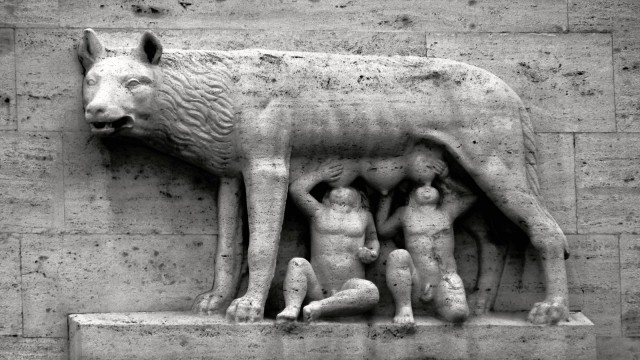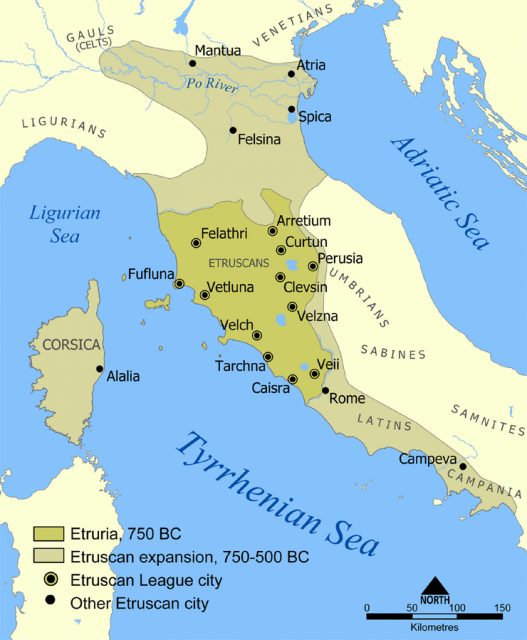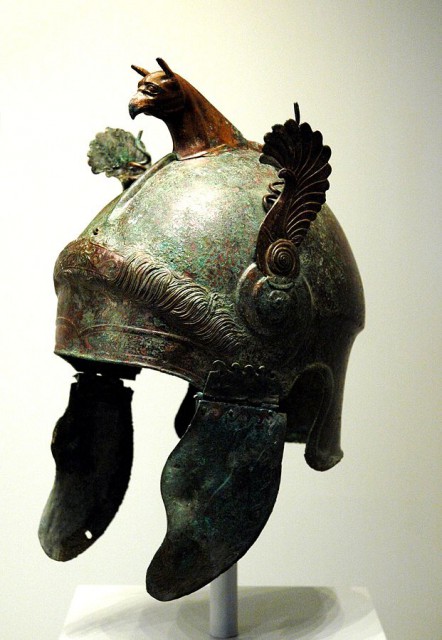They had an innovative military and political dynamic and welcomed many aspects of foreign cultures and had such power that it resonates even in the modern world. They weren’t always the powerful Roman Empire, many influential periods shaped and truly enabled the Roman Empire.
The beginnings of the eternal city and “Romans.”
The traditional origin story of Rome is certainly a product of later Roman culture. However, the story of Romulus and Remus does speak a great deal to how the Romans viewed themselves. Romulus and Remus being raised by a wolf is barbaric enough, but the cold-blooded murder of Remus by Romulus over Romulus’ territory shows that the Romans will go to great lengths to protect their own. This is echoed in later civil wars with little hesitation to go to war with other Romans to protect their territory or to enforce what they thought was right.This period is steeped in legend and is unverified, however, the earliest beginnings of the Romans as a people had arguably the largest impact on their rise to power and culture. The Romans added and borrowed many aspects of foreign enemies and allies, but that borrowed culture was added to a firm base of Roman ideals.

Prudence and practicality may arguably be one of the key reasons that the Romans were able to maintain their Empire once they conquered it. Not only did they have a wide religious and cultural tolerance, they often welcomed and accepted new ideas, if somewhat unintentionally at times as was the case with the Greek cultural invasion. Resistance to the culture and religion of conquered peoples only fragments empires, and the Romans were too practical to let that happen.
Virtus’ ideal of courage in battle is almost a cliché in the ancient world, but the Roman approach was a little different, it could almost mean stubbornness in battle along with courage. Faith and loyalty to their fellow soldier as well as the basic principle of Virtus often kept the Romans fighting long past the point where most armies would flee as Pyrrhus would see during his later invasions.
This ideal of Virtus likely comes from the early days of Rome where the leading men were also the leading warriors who rose to the top because embracing these principles simply resulted in more success. Though they are legends, the fratricide of Remus by Romulus as well as the famous stealing and rape of the Sabines are bloody and aggressive foundational stories likely not far from the attitude and behavior of the earliest Romans who had to fight to maintain their early unity among the seven hills.
The system of conquest and the return of victors laden with loot and riches was a key aspect of this early period and continued into the republic and empire with generals granted triumphs for their conquests and even emperors such as Trajan conquering and returning to show off his booty by building great works and sponsoring some of the more elaborate games in the history of the Colosseum.
Embracing independence
With a combination of a wealthy trade route from Greek Italy to Northern Etruscan territory and successful raiding the Romans grew from scattered settlements on seven close hills to a unified city with a forum, walls, and sewers. Their raiding and early warfare were the responsibility of the King, who personally led armies, but much of the early culture and construction seems to be influenced by the Etruscans.The exact manner of interaction between the Etruscans and Romans is debated and may have been a combination of alliances, trading, warfare and different conquests, but in 509 BCE the Romans overthrew their Etruscan king and started on their path with a new Republic.

With Kings replaced by Consuls the militaristic foundation of Rome did not stop, especially as the newly independent Republic was determined to resist or conquer the Etruscans or any other power that threatened to control them.
The Greatest Enemies
Hannibal once stood at the walls of Rome after winning a great victory at Cannae, but he never actually took the city or forced peace. Two of Rome’s early enemies accomplished just that and shaped the way the Romans would respond in later encounters.Rome faced the Gauls early in their history and in 390 BCE they suffered a defeat in the field to the Gallic army of Brennus close to Rome. With Rome largely unguarded the Gauls had an easy time taking most of the city while the elite huddled in the fortified Capitoline hill. The storming of the hill was saved only by the sacred geese of Juno, who were spooked and alerted the Romans of a secret hillside assault. Most of the city was taken, however, and a truce was forced with the Romans paying a large amount of gold to have the Gauls go away.
When the Romans complained that the Gauls used heavier weights to make the gold payoff larger, Brennus threw his heavy sword on the scale saying “Vae victis/ Woe to the Conquered” which thoroughly humiliated the Romans. Brennus was later tracked down and defeated by a reinforcing Roman army, but the humiliation would stick with the Romans in such a way that even when they were crumbling to the barbarian invasion, they fought tooth and nail to preserve their power.
Romans won several hard-fought victories that often were closer than normal, and ultimately the first war ended with a more or less mutual peace. The Second Samnite War was a far greater affair. The Romans won several early victories, but the Samnites simply refused the harsh Roman peace terms and continued on.
In 321 BCE the Roman army was caught in a terrible position in the mountainous terrain and were forced to unconditionally surrender. The surrender of the army was humiliating and forced a five-year peace dictated by the Samnites.

During this period, the Romans also recognized the importance of sturdy roads as they constantly needed to move north and south to face both threats. One of the more famous of these was the Via Appia, still in existence today. The roads must have been vital during these formative campaigns and solidified their place in Roman campaigns and expansion.
The third war saw the Samnites again find a powerful ally, this time, the Gauls. With their new army, the Romans faced a combined force that may have outnumbered them two to one. Three of the fiercest and most determined combatants of the Mediterranean fought a long battle that left as many as 25,000 dead. The Romans emerged victoriously. In an ensuing battle, the Romans broke the Samnite army, captured their camps and nearby cities and finally conquered the Samnites. Being practical, the Romans allied themselves with many of these cities and incorporated these fierce fighters into the legion as allies.
The Samnite Wars were fought close to home, in the Etruscan territory and the hills and mountains of central Italy. They gave the Romans the hard earned experience that they would count on when they faced their first true professional army from across the Adriatic only a few years later.
By William McLaughlin for War History Online

Δεν υπάρχουν σχόλια:
Δημοσίευση σχολίου